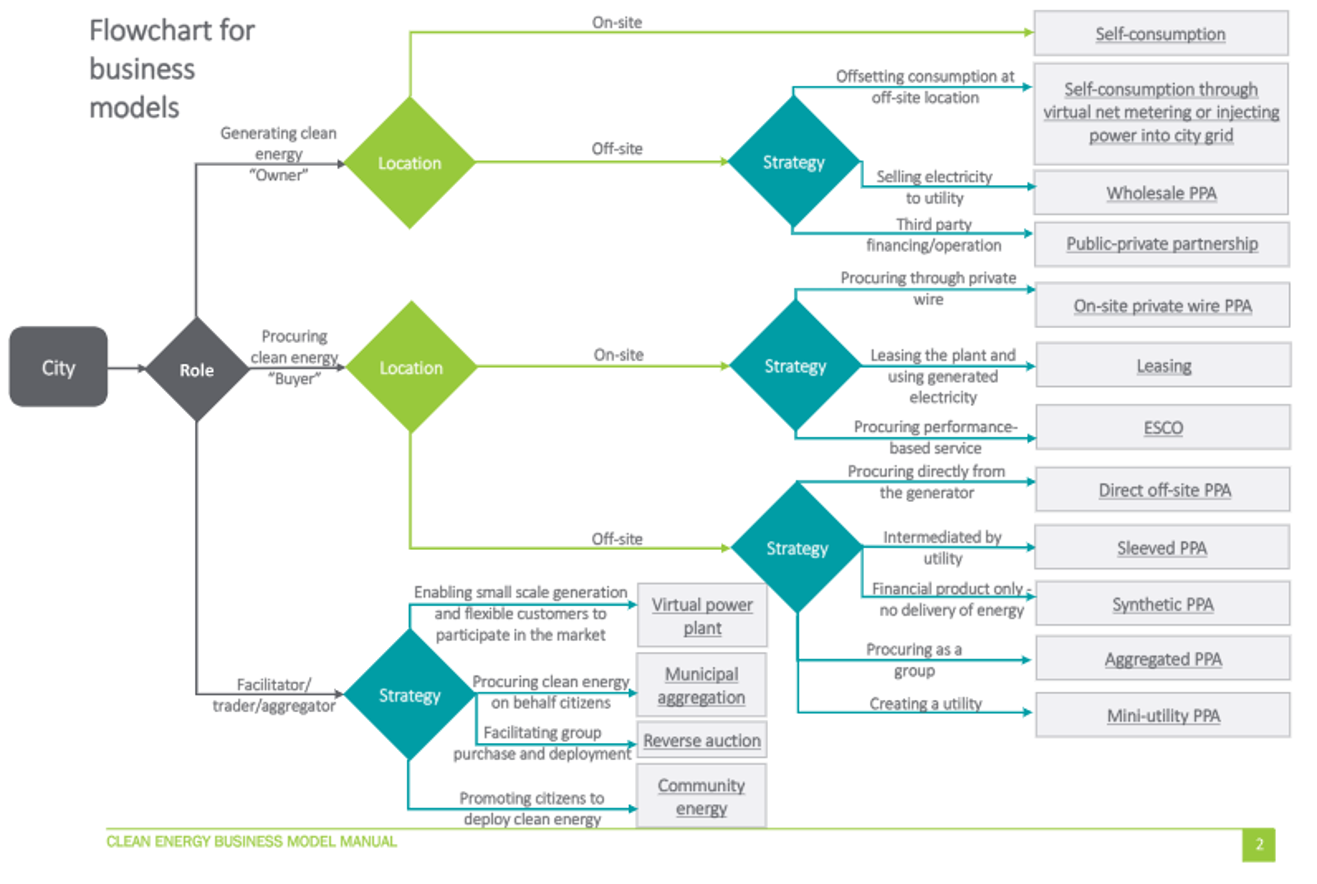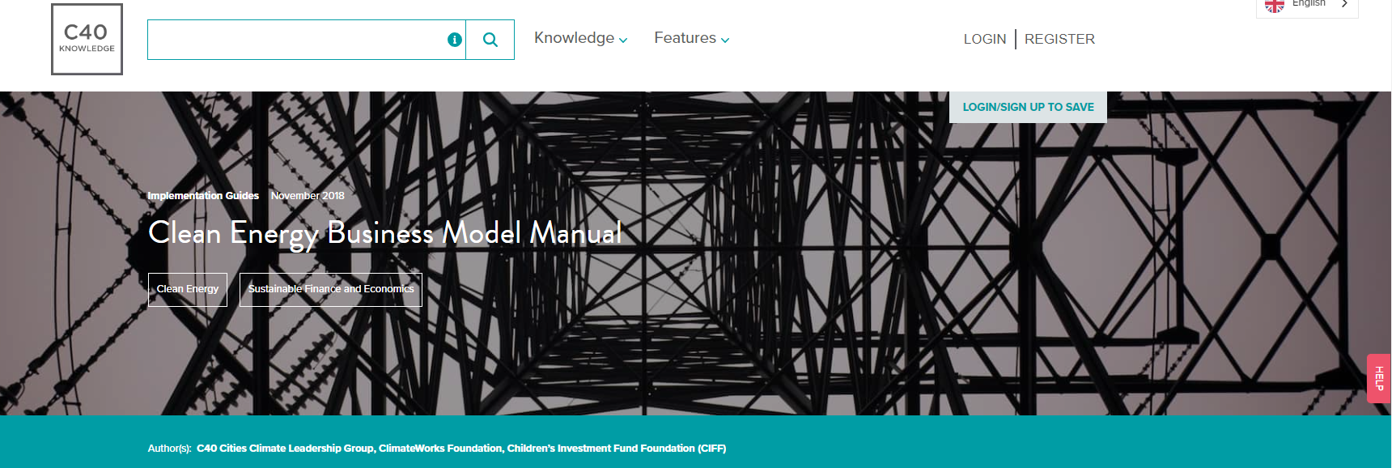Clean Energy Business Model Manual
Description
The Clean Energy Business Model Manual seeks to be an informative guide to the various types of business models and financial instruments that assist cities and their communities with their clean energy initiatives and policies. The following flowchart can be used to examine business models based on the function and strategy of the city and the location of the clean energy facility. In addition, it provides a summary of the characteristics of business models and financial instruments.
This manual seeks to provide cities with information on each business model, allowing them to determine which business models best suit their renewable energy project and use this manual as a starting point for business model development. Case studies are included to illustrate how other C40 cities have implemented diverse business models and financial instruments through the use of examples.

Gallery

Classifications
Scale of implementation
The information included in this manual aims to provide cities worldwide with information on each business model and enable them to investigate which business models would fit best to their clean energy project and use this manual as a starting point for business model selection and development.
Type
The Clean Energy Business Model Manual is a .pdf file that can be free accessed.
Phase of solution
This manual explores business models and financial instruments and presents their administrative and financial structure, suitability for various regulatory contexts and market conditions, advantages and disadvantages, providing examples and case studies from C40 cities.
Target audience
This platform and data are utilized by national policy makers, industry players, financers, developers, research consultancies, RES associations, chambers of commerce, etc.
Key features-functionality
The guidance covers:
- Business models:
- Models for generating clean energy, such as wholesale power purchase agreements (PPA).
- Models for procuring clean energy, such as leasing models and direct off-site PPAs.
- Models for facilitating, trading and aggregating demand for clean energy, such as reverse auctions and municipal aggregation.
- Financial instruments, including:
- Crowdfunding,
- Feed-in schemes,
- On-tax bill and on-energy bill financing,
- Green bonds.
References & Sources for Further Reading
